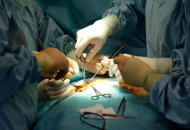Introduction | Liposuction | Face | Tummy Tuck | Breast | Male Breast | Butt Lift | Eyelid & Eyebrow | Fat Transfer | Vagina
Introduction | FAQ | Before & After
 Breast augmentation provides an opportunity for some women to change their breast size to obtain a more satisfying physical appearance, allowing them to improve body image and enhance confidence in the way they present themselves.
Breast augmentation provides an opportunity for some women to change their breast size to obtain a more satisfying physical appearance, allowing them to improve body image and enhance confidence in the way they present themselves.
Breast implants augmentation is a common procedure performed to enlarge small breasts. Dr.Shu will help you determine the most effective surgical approach following a thorough examination of your breasts, and he will explain the surgical procedure in a personalized fashion.
The type of implants used for breast augmentation varies depending on the patient. Silicone and saline implants are available for this procedure. Round implants ranging from low profile to high profile are commonly used. However, a consultation with your doctor is the best way to consider various factors to determine the best style of implants for your body.
Screening for breast cancer using mammography and other imagine tests are required prior to surgery. Preoperative instructions include the discontinuation of certain drugs in order to decrease the possibilities of bleeding. Prophylactic antibiotics are routinely prescribed to prevent postoperative infection. Breast implants surgery does not generally interfere with the ability to breast feed.
Surgery Procedure
 The goal of breast augmentation is to obtain a more natural-looking breast that transitions to the upper chest of the breast mound in a more appealing way. Dr. Shu prefers to use the inframammary (under the breast, in the crease) incision and transaxillary incision for placement of the implants in breast augmentation surgery. These incisions allow for convenient access to the sub-muscular level and will not damage the breast. Placing the implants underneath the the muscle typically produces a more natural look and also significantly decreases the amount of scarring around the implants. Furthermore, because the patient’s own tissue covers the implants, there is lower chance of rippling or folding in the implants envelope.
The goal of breast augmentation is to obtain a more natural-looking breast that transitions to the upper chest of the breast mound in a more appealing way. Dr. Shu prefers to use the inframammary (under the breast, in the crease) incision and transaxillary incision for placement of the implants in breast augmentation surgery. These incisions allow for convenient access to the sub-muscular level and will not damage the breast. Placing the implants underneath the the muscle typically produces a more natural look and also significantly decreases the amount of scarring around the implants. Furthermore, because the patient’s own tissue covers the implants, there is lower chance of rippling or folding in the implants envelope.
The surgery includes the pre-operative period, surgical procedure, and post-operative period. During the pre-operative period, the patient consults with his/her doctor to make final decisions about the surgery, such as the size or type of implants used. For the surgery, local anesthesia is used. After the surgery, the patient spends a short amount of time for recovery.
Recovery
Following the surgery, the patient must be taken home by a family member or friend who can care for them the first 24 hours. Soreness is expected, and discomfort can usually be controlled with medication. Any bruising or nipple burning sensations will fade after about two weeks, and stitches can be removed after 7 days. Swelling in the breasts may take 3 to 5 weeks to go away. Patients typically return to work within a few days after the procedure.
Site of Incision
There are four common sites of incision in the breast augmentation surgery: underneath your breasts (inframammary), around the nipple (periareolar), in the armpit (transaxillary) or through the belly button (TUBA or trans-umbilical breast augmentation). All these approaches have advantages and disadvantages.
The inframammary incision under the breast is the most common site of incision for the breast augmentation, the scar is usually hidden under the breast.
The disadvantages of the incision around the nipple include numbness, visible scar and difficulties with breastfeeding.
The TUBA technique can result in breast implants rupture during placement, undercorrection of certain breast asymmetries, incomplete control of shape, and bleeding. When properly performed in the experienced surgeon, it is an excellent scarless alternative to the other type of incisions.
The transaxillary approach hiddes the scars in the skin crease in the top of the armpit.
Implant size and volume
The common sizes of breast implants ranges from 300 – 450 ml. Choosing your desired size can be highly personal. You may use breast implants sizers to determine the size you want. Take the time to decide what you will be happy with so you don’t feel the need to undergo a second surgery.
Saline vs. Silicone
 There are some advantages of saline implants over silicone and vice versa. Choosing either saline or silicone implant is based on personal preference although more women choose Saline implants than Silicone.
There are some advantages of saline implants over silicone and vice versa. Choosing either saline or silicone implant is based on personal preference although more women choose Saline implants than Silicone.
- Saline implants are great because it is essentially made up of normal saline in the inside so that if one happens to rupture, there would be no foreign material in the body.
- Saline implant is easy to tell when one ruptures unlike silicone implants. If a silicone implant ruptures, the only way to tell would be by getting an MRI because silicone slowly leaks out of the implant into the body.
- Saline implants are easy to switch out and change if needed and silicone implants are not as easy.
- Saline implants are also favorable because they are not as expensive as silicone implants, it is about $1000 difference.
- Another advantage saline implants have over silicone, is the incision is approximately one inch for an implant, whereas a silicone implant need a two inch incision.
- There may be a slight chance that with saline the lower aspect of the implant may be felt, some women feel that silicone breast implants look and feel more like natural breast tissue, however, with improved surgical techniques, all the implants are put under the muscle so usually it cannot be felt with either implant.
- For a person to consider saline implants, it is recommended that you are at least 18 years old and with silicone implants it is required that you are at least 22 years old.
- It is recommended to have MRI exam every three years for silicone implants, there is no requirement for saline implants.
- Both saline and silicone implants pose similar risks.
| Saline | Silicone | |
| Material | No foreign body | Silicone |
| Ruptures | Will know right away if implant ruptures | Need to get MRI to know if implant ruptures |
| Replacement After Rupture | Easy to switch out or change if needed | Not as easy to switch out or change if needed |
| Cost | Less expensive | More expensive |
| Incision Size | One inch incision | Two inch incision |
| Age Limitation | 18 years old and older | Must be 22 years old and older |
| MRI Exams | No requirement | First time in 2 years, then every three years |
| Rupture Risks | Approx. 1% per year | Approx. 1% per year |
| Implants Feeling | May feel lower aspect of implant (very slight chance) | Less of a chance than saline to feel lower aspect of implant |





